Europe, British Isles, South-Central England, Worcestershire, Worcester Cathedral [Map]
Worcester Cathedral is in Worcester, Worcestershire [Map].
General Interior of Worcester Cathedral [Map].

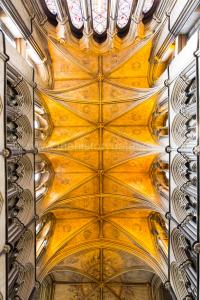
Around 744 Bishop Mildred was appointed Bishop of Worcester.
Around 800 Bishop Denebeorht was consecrated Bishop of Worcester.
In 957 Archbishop Dunstan (age 48) was appointed Bishop of Worcester.
Anglo-Saxon Chronicle. 959. This year died King Edwy, on the calends of October; and Edgar (age 16) his brother took to the government of the West-Saxons, Mercians, and Northumbrians. He was then sixteen years old. It was in this year he sent after St. Dunstan (age 50), and gave him the bishopric of Worcester; and afterwards the bishopric of London. In his days it prosper'd well; and God him gave, that he dwelt in peace the while that he lived. Whate'er he did, whate'er he plan'd, he earn'd his thrift. He also rear'd God's glory wide, and God's law lov'd, with peace to man, above the kings that went before in man's remembrance. God so him sped, that kings and earls to all his claims submissive bow'd; and to his will without a blow he wielded all as pleased himself. Esteem'd he was both far and wide in distant lands; because he prized the name of God, and God's law traced, God's glory rear'd, both far and wide, on every side. Wisely he sought in council oft his people's good, before his God, before the world. One misdeed he did, too much however, that foreign tastes he loved too much; and heathen modes into this land he brought too fast; outlandish men hither enticed; and to this earth attracted crowds of vicious men. But God him grant, that his good deeds be weightier far than his misdeeds, to his soul's redemption on the judgment-day.
In 992 Archbishop Ealdwulf was elected Archbishop of York and Bishop of Worcester.
In 1033 Bishop Brihtheah was appointed Bishop of Worcester.
John of Worcester. 1033. Leofsy, bishop of the Hwiccas, a devout and humble man, died at the episcopal vill of Rempsey, on Tuesday, the fourteenth of the calends of September [19th August], and, as we may be allowed to hope, ascended to the heavenly realms: his body was buried with honour in the church of St. Mary [Map], at Worcester. Brihteag, abbot of Pershore, sister's son of Wulfstan, archbishop of York, was raised to the vacant see.
In 1038 Bishop Lyfing was appointed Bishop of Worcester.
John of Worcester. 1040. Harold (age 24), king of England, died at London, and was buried at Westminster. After his funeral, the nobles of almost the whole of England sent envoys to Hardicanute (age 22) at Bruges, where he was staying with his mother (age 55), and, thinking it was for the best, invited him to come to England and ascend the throne. Thereupon, he fitted out fifty ships, and embarking Danish troops, before midsummer sailed over to England, where he was received with universal joy, and shortly afterwards crowned; but during his government he did nothing worthy his royal power. For as soon as he began to reign, calling to mind the injuries which both he and his mother had suffered at the hands of his predecessor, and reputed brother, king Harold (age 24), he despatched to London, Ælfric, archbishop of York, and earl Godwin (age 39), with Stor, the master of his household, Edric, his steward, Thrond, captain of his guards, and other men of high rank, with orders to dig up the body of Harold (age 24) and throw it into a sewer; and when it was thrown there, he caused it to be dragged out and cast into the river Thames. Shortly afterwards, it was picked up by a fisherman, and being immediately brought to the Danes, was honourably buried by them in a cemetery they possessed at London.60 After this, he ordered that eight marks should be paid to every rower in his fleet, and twelve to each steersman, to be levied from the whole of England; a tax so burthensome, that scarcely any one would pay it, and he became thoroughly detested by those who at first were most anxious for his coming. Besides, he was greatly incensed against earl Godwin (age 39), and Living, bishop of Worcester, for the death of his brother Alfred, of which they were accused by Ælfric, archbishop of York, and some others. In consequence, he took the bishopric of Worcester from Living and gave it to Ælfric; but the following year, he ejected Ælfric and graciously restored Living, who had made his peace with him.
Note 60. The cemetery of St Clement-Danes, where the Northmen had a settlement on the bank of the Thames, outside the walls of London. The Saxon Chronicle is silent as to Harold's corpse being thrown into the Thames and fished up, but Henry of Huntingdon gives the same account as our author.
In 1041 Bishop Lyfing was restored to the see of Worcester.
In 1047 Archbishop Stigand was appointed Bishop of Worcester.
John of Worcester. 1058. Algar, earl of Mercia, was outlawed by king Edward (age 55) for the second time, but, supported by Griffyth, king of Wales, and aided by a Norwegian fleet, which unexpectedly came to his relief, he speedily recovered his earldom by force of arms. Pope Stephen died on the third of the calends of April [30th March]. He was succeeded by Benedict, who sent the pallium to Stigand, archbishop of Canterbury. Æthelric was ordained bishop of Sussex; and abbot Siward was consecrated bishop of Rochester. Aldred, bishop of Worcester, dedicated with great ceremony to Peter, prince of the apostles, the church [Map] which he had built from the foundations in the city of Worcester, and afterwards, with the king's license, appointed Wulfstan (age 50), a monk of Worcester, ordained by him, abbot of the new foundation. Then, having resigned the bishopric of Wilton, which he held in commendam, and restored it to Heriman, before mentioned, he crossed the sea, and went through Hungary to Jerusalem; a pilgrimage which no English archbishop or bishop is known to have performed before.
In 1062 Bishop Wulfstan (age 54) was appointed Bishop of Worcester.
Flowers of History. 1073. Gregory, who is also called Hildebrand, held a synod, and anathematized those guilty of simony. Some priests who had taken wives he removed from their holy office, by a new example, and as it seemed to many an inconsiderate prejudice, in contradiction to the opinions of the ancient fathers. The blessed Wolstan (age 65), who had been unjustly deposed by archbishop Lanfranc (age 68), was restored to his diocese, in consequence of a miracle. After he had fixed his pastoral staff on the tomb of the blessed Edward, no one except himself could draw it out again.
Florence of Worcester Continuation. 1125. Simon, the bishop-elect of Worcester, went to Canterbury in company with Godfrey, bishop of Bath, and, having been ordained priest by the archbishop on Saturday in Whitsunweek [23rd May]1, was on the following day consecrated with great pomp bishop of the holy mother church of Worcester. John, archdeacon of Canterbury, receiving consecration as bishop of Rochester at the same time. Richard, bishop of Hereford, David of Bangor, Godfrey of Bath, and Sigefred of Chichester assisted at the consecration.
Note 1. A repetition of a former entry.
Florence of Worcester Continuation. 1125. Simon, the queen's chancellor, and Sigefred, abbot of Glastonbury, both men of distinguished worth and piety, were chosen bishops while they were in Normandy; Simon being appointed to the see of Worcester, and Sigefred to the see of Chichester. Hugh, a man of great prudence, archdeacon successively to Samson and Theowulf, bishops of Worcester, died on the twelfth of the calends of April [21st March). After Easter [29th March], the bishops-elect, Simon and Sigefred, with the archbishops William (age 55) and Thurstan (age 55), and a cardinal of Rome named John, came to England,
In 1163 Bishop Roger Fitzrobert was appointed Bishop of Worcester.
On 10 Aug 1180 Archbishop Baldwin Avigo (age 55) was appointed Bishop of Worcester.
On 03 Apr 1216 Bishop Sylvester was elected Bishop of Worcester.
On 03 Jul 1216 Bishop Sylvester was consecrated as Bishop of Worcester.
On 08 Sep 1216 Bishop Sylvester was enthroned as Bishop of Worcester.
After 19 Oct 1216 King John "Lackland" of England (age 49) was buried in the Lady Chapel of Worcester Cathedral [Map]. Originally his effigy would have covered his coffin at floor level. Sometime around 1500 his tomb was moved to the Choir in front of the High Altar - the Chest Tomb similar to that of Prince Arthur's nearby. The Purbeck Marble effigy is the earliest of a King in England. Unusually carved to be life-like. His head supported by St Oswald and St Wulfstan, the two patron saints of Worcester. The base constructed in the 16th Century. The tomb was opened again on Monday 17 Jul 1797 at the instigation of Valentine Green (1739-1813). Inside the tomb chest, a stone coffin was discovered, containing the royal remains - see Monumental Effigies.
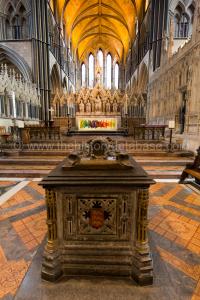
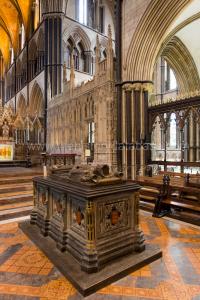
Around 25 Aug 1218 Bishop William de Blois was elected Bishop of Worcester.
On 07 Oct 1218 Bishop William de Blois was consecrated Bishop of Worcester.
On 30 Aug 1236 Bishop Walter de Cantelupe (age 45) was elected Bishop of Worcester.
On 03 May 1237 Bishop Walter de Cantelupe (age 46) was consecrated Bishop of Worcester.
On 19 Sep 1266 Bishop Nicholas Ely was consecrated Bishop of Worcester.
On 26 Sep 1266 Bishop Nicholas Ely was enthroned Bishop of Worcester at Worcester Cathedral [Map].
On 02 Mar 1268 Bishop Nicholas Ely was translated to Bishop of Winchester at Worcester Cathedral [Map] by Pope Clement IV.
Around 20 May 1268 Godfrey Giffard Bishop of Worcester (age 33) was appointed Bishop of Worcester.
On 13 Oct 1278 Llewellyn "Last" Aberffraw (age 45) and Eleanor Montfort Princess of Wales (age 26) were married at Worcester Cathedral [Map]. She the daughter of Simon de Montfort 6th Earl of Leicester 1st Earl Chester and Eleanor Plantagenet Countess Pembroke and Leicester. They were first cousin once removed. He a great grandson of King John "Lackland" of England. She a granddaughter of King John "Lackland" of England. 
On 07 Apr 1287 Robert Mortimer 2nd Baron Mortimer (age 62) died at Richard's Castle, Herefordshire [Map]. He was buried at Worcester Cathedral [Map]. His son Hugh Mortimer 3rd Baron Mortimer (age 32) succeeded 3rd Baron Mortimer Burford. Matilda Unknown Baroness Mortimer by marriage Baroness Mortimer Burford.
On 30 Mar 1290 Joyce Zouche Baroness Mortimer (age 50) died at Worcester, Worcestershire [Map]. She was buried at Worcester Cathedral [Map].
On 04 Feb 1302 Godfrey Giffard Bishop of Worcester (deceased) was buried by John Monmouth Bishop of Llandaff at Worcester Cathedral [Map].
On 20 Jul 1304 Hugh Mortimer 3rd Baron Mortimer (age 49) died from poisoning. He was buried in Worcester Cathedral [Map]. He was succeeded by his daughter Joan Mortimer Baroness Talbot
His Matilda Unknown Baroness Mortimer was suspected. She sought the protection of Margaret of France Queen Consort England (age 25). After the death of King Edward "Longshanks" I of England (age 65) in 1307 she, Matilda Unknown Baroness Mortimer died suddenly, probabnly murdered in revenge for the murder of her husband.

On 13 Nov 1307 Archbishop Walter Reynolds was elected Bishop of Worcester.
On 13 Oct 1308 Archbishop Walter Reynolds was consecrated Bishop of Worcester.
In 1333 Bishop Simon Montagu was appointed Bishop of Worcester.
On 03 Feb 1388 the Merciless Parliament commenced. It ended on 04 Jun 1388. Its primary function was to prosecute members of the Court of King Richard II of England (age 21). The term "Merciless" is contemporary having been coined by the chronicler Henry Knighton.
Michael de la Pole 1st Earl Suffolk (age 58) was sentenced to be hanged, drawn and quartered in his absence. He had escaped to France.
Archbishop Alexander Neville (age 47) was found guilty of treason and it was determined to imprison him for life in Rochester Castle, Kent [Map]. He fled to Louvain [Map] where he became a parish priest for the remainder of his life.
On 19 Feb 1388 Robert Tresilian was hanged naked and his throat cut. See Chronicle of Adam of Usk.
On 25 Mar 1388 Nicholas Brembre was hanged. He was buried at Christ Church Greyfriars [Map].
On 05 May 1388 Simon Burley (age 48) was executed despite the protestations of his friend Edmund of Langley 1st Duke York (age 46). See Chronicle of Adam of Usk.
On 12 May 1388 John Beauchamp 1st Baron Beauchamp (age 69) was beheaded at Tower Hill [Map]. He was buried at Worcester Cathedral [Map]. Baron Beauchamp of Kidderminster forfeit.
Robert de Vere 1st Duke Ireland (age 26) was attainted.
On 15 Jun 1395 Bishop Robert Tideman of Winchcombe was translated to Bishop of Worcester.
Monumental Effigies. Effigy of an Ecclesiastic in Worcester Cathedral [Map].
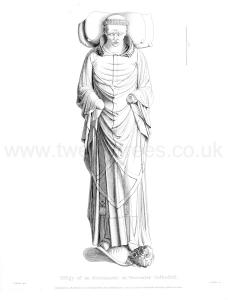
Monumental Effigies. A Lady of the Clifford Family in Worcester Cathedral [Map].
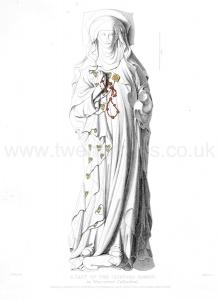
On 19 May 1401 Bishop Richard Boteville was elected Bishop of Worcester.
On 09 Oct 1401 Bishop Richard Boteville was consecrated as Bishop of Worcester.
On 15 May 1434 Cardinal Thomas Bourchier (age 16) was appointed Bishop of Worcester.
On 09 Apr 1475 John Beauchamp 1st Baron Beauchamp Powick (age 66) died at Powick, Worcestershire. He was buried at Worcester Cathedral [Map]. His son Richard Beauchamp 2nd Baron Beauchamp Powick (age 40) succeeded 2nd Baron Beauchamp Powick in Worcestershire.
On 15 Jul 1476 Bishop John Alcock (age 46) was translated to Bishop of Worcester.
On 16 Oct 1486 Bishop Robert Morton (age 51) was appointed Bishop of Worcester.
On 28 Jan 1487 Bishop Robert Morton (age 52) was consecrated Bishop of Worcester. He was the last Bishop of Worcester before the Reformation.
On 29 Jan 1487 Margaret Ferrers Baroness Beauchamp Powick (age 74) died. She was buried at Worcester Cathedral [Map].
On 30 Aug 1497 Giovanni de Gigli was elected Bishop of Worcester.
On 10 Sep 1497 Giovanni de Gigli was consecrated Bishop of Worcester.
Wriothesley's Chronicle 1485-1509. 02 Apr 1502. And in Easter weeke followinge the saide Prince Arthure (age 15) deceased at Ludlowe [Map], in Wales, and was buried at Worcester [Map].b
Note b. Prince Arthur (age 15) died on the Saturday following Easter Sunday in 1503, being April 2nd, and was buried in Worcester cathedral on the 27th April.
Before 25 Apr 1502 Prince Arthur's (deceased) body was transported from Ludlow, Shropshire [Map] to Worcester Cathedral [Map] via the River Servern in a special wagon upholstered in black and drawn by six horses, also caparisoned in black.
On 25 Apr 1502 Prince Arthur Tudor (deceased) was buried in the Chantry Chapel of Prince Arthur in Worcester Cathedral [Map].
Bishop William Smyth (age 42), Bishop of Lincoln and Lord President of the Council of Wales and the Marches, presided.
George Grey 2nd Earl Kent (age 48) and George Talbot 4th Earl of Shrewsbury (age 34) received Arthur's Coat of Arms, Richard Grey 3rd Earl Kent (age 21) received Arthur's shield, John Grey 2nd Baron Grey of Powis (age 17) received Arthur's sword, pommel forwards. Gruffydd ap Rhys ap Thomas Deheubarth (age 24) carried Prince Arthur's banner.

Gerald Fitzgerald 9th Earl of Kildare (age 15) rode Arthur's courser as the Man at Arms, in Arthur's full armour, carrying Arthur's poleaxe, pointed down, through the Nave to the Altar where he was stripped of Arthur's (deceased) clothes.

The Chapel is to the right of the High Altar in the Chancel. It is decorated with heraldic carvings symbolising the houses of York, Lancaster, Beaufort and Catherine of Aragon's Pomegranate. His Purbeck marble tomb chest is decorated with the arms of England. He is buried beneath the cathedral's floor several feet away from the tomb that visitors can see.
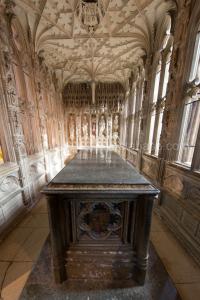
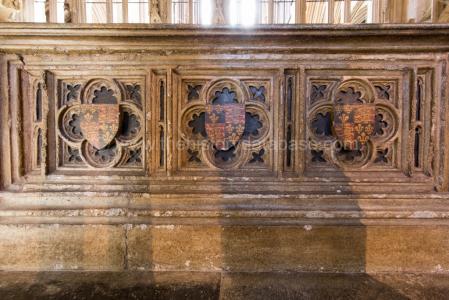
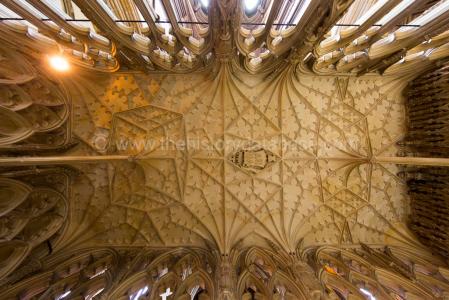
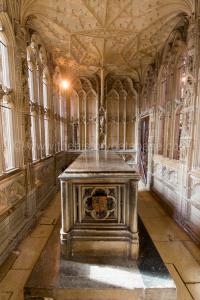
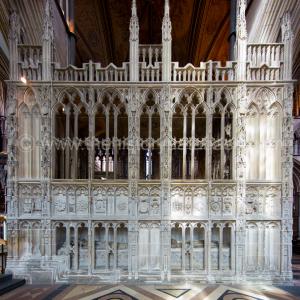
In 1521 Gruffydd ap Rhys ap Thomas Deheubarth (age 43) died. He was buried at Worcester Cathedral [Map] next to his childhood friend Prince Arthur Tudor.
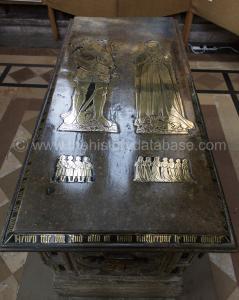
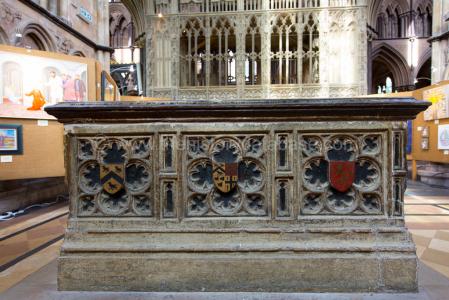
In 1535 Bishop Hugh Latimer (age 48) was appointed Bishop of Worcester.
On 17 Aug 1539 Bishop John Bell was consecrated Bishop of Worcester by Archbishop Thomas Cranmer (age 50).
In 1544 Bishop Richard Pate was appointed Bishop of Worcester having been appointed by the Pope in 1541.
In 1559 five new Bishops were consecrated including:
Archbishop Edwin Sandys (age 40) was consecrated Bishop of Worcester.
Bishop William Barlow (age 61) was consecrated Bishop of Chichester.
Archbishop Edmund Grindal (age 40) was consecrated Bishop of London.
In 1559 Archbishop Edwin Sandys (age 40) was consecrated Bishop of Worcester.
On 26 Jan 1571 Bishop Nicholas Bullingham (age 51) was translated to Bishop of Worcester.
In 1576 Bishop Nicholas Bullingham (age 56) was buried in Worcester Cathedral [Map].
On 10 Feb 1593 Bishop Richard Fletcher (age 48) was translated to Bishop of Worcester.
On 23 Apr 1608 Bishop Arthur Lake (age 38) was appointed Dean Worcester.
In 1627 Archbishop William Juxon (age 45) was appointed Dean Worcester.
On 22 Feb 1650 Thomas Lyttelton 1st Baronet (age 57) died. He was buried in Worcester Cathedral [Map]. His son Henry Lyttelton 2nd Baronet (age 26) succeeded 2nd Baronet Lyttelton of Frankley.
Evelyn's Diary. 02 Aug 1654. This evening we arrived at Worcester [Map], the Judges of Assize and Sheriff of just entering as we did. Viewing the town the next day, we found the Cathedral [Map] much ruined by the late wars, otherwise a noble structure. The town is neatly paved and very clean, the goodly river Severn running by it, and standing in a most fertile country.
In 1660 Bishop George Morley (age 61) was consecrated Bishop of Worcester.
On 23 May 1660 John Gauden Bishop was elected Bishop of Worcester.
On 30 Nov 1662 Bishop John Earle (age 61) was consecrated Bishop of Worcester.
Evelyn's Diary. 30 Nov 1662. St. Andrew's day. Invited by the Dean of Westminster (age 61) to his consecration dinner and ceremony, on his being made Bishop of Worcester. Dr. Bolton preached in the Abbey Church [Map]; then followed the consecration by the Bishops of London (age 64), Chichester (age 70), Winchester (age 64), Salisbury (age 70), etc. After this, was one of the most plentiful and magnificent dinners that in my life I ever saw; it cost near £600 as I was informed. Here were the judges, nobility, clergy, and gentlemen innumerable, this Bishop being universally beloved for his sweet and gentle disposition. He was author of those Characters which go under the name of Blount. He translated his late Majesty's (age 32) "Icon" into Latin, was Clerk of his Closet, Chaplain, Dean of Westminster (age 61), and yet a most humble, meek, and cheerful man, an excellent scholar, and rare preacher. I had the honor to be loved by him. He married me at Paris, during his Majesty's (age 32) and the Church's exile. When I took leave of him, he brought me to the cloisters in his episcopal habit. I then went to prayers at Whitehall [Map], where I passed that evening.
In 1671 Bishop Walter Blandford (age 55) was appointed Bishop of Worcester.
In 1675 Bishop James Fleetwood (age 71) was appointed Bishop of Worcester.
Evelyn's Diary. 24 Mar 1676. Dr. Brideoake (age 63), Bishop of Chichester, preached a mean discourse for a Bishop. I also heard Dr. Fleetwood (age 72), Bishop of Worcester, on Matt. xxvi. 38, of the sorrows of Christ, a deadly sorrow caused by our sins; he was no great preacher.
In 1689 Bishop Edward Stillingfleet (age 53) was appointed Bishop of Worcester.
In 1717 Bishop John Hough (age 65) was appointed Bishop of Worcester.
In 1743 Isaac Maddox Bishop (age 45) was translated to Bishop of Worcester.
On 27 Sep 1759 Isaac Maddox Bishop (age 62) died. He is buried in the South Transept of Worcester Cathedral [Map].
In 1769 William Digby (age 35) was appointed Dean Worcester until 1778.
In 1774 Bishop Brownlow North (age 32) was appointed Bishop of Worcester.
In 1783 St Andrew St John (age 50) was appointed Dean Worcester.
In 1808 Bishop Folliott Cornewall (age 53) was translated to Bishop of Worcester.
On 30 Aug 1808 Bishop John Jenkinson (age 26) was appointed Prebendary of Worcester Cathedral.
Effigy of King John. THIS remarkable personage [King John], the events of whose "troublesome reign" are so conspicuous in English History—and from whose disputes with his Barons we derive the foundation deed of our liberties, Magna Charta, was born at Oxford in 1166. He was the youngest son of Henry the Second, by his wife Eleanor of Guienne. His father jestingly called him Sans Terre or Lackland, as if, being born last, he had nothing left to give him. He, however, created him Earl of Mortagne in Flanders (latinized in the public acts of the time "Comes Moritonie"), of Cornwall, and Gloucester, made him titular King of Ireland, which grant was confirmed by the Pope, and endowed him with divers other honours and possessions. His first wife [Note. King John was betrothed, not married, to Alice] was Alice, daughter of Humbert second Earl of Maurienne, now called Savoy; this marriage was contracted by the parties in their childhood, A. D. 1173, and John, by the death of Alice, lost his claim, in her right, to her fathers possessions. His second wife was Isabella, daughter of Robert Earl of Gloucester, natural son of King Henry the First [Note. Isabella was the daughter of William Fitzrobert 2nd Earl Gloucester who was the son of Robert Earl of Gloucester]; but falling desperately in love with Isabella, daughter of Aymer Earl of Angoulesme, he procured a divorce from Isabella of Gloucester, under the plea of having contracted a marriage with her within the third degree of consanguinity, and in 1200 married Isabella de Angoulesme. King John, in the midst of public commotions (to which his misgovernment had largely contributed) and adverse fortune, was cut off by death at Newark, on the 19th October 1216, in the eighteenth year of his reign. His death is assigned by Matthew Paris, a writer who lived in his own time, to natural causes, induced by grief for the disaster which had occurred to his army in crossing the Well Stream or Lincoln Washes, in his march to oppose Lewis son of the King of France, who, backed by the discontented Barons, pretended to his Kingdom. Having rested at Swinesheada Abbey, in his way to Newark, for a night, a story gained ground that the final catastrophe of his life was accelerated by poison administered to him by a monk. There is no conclusive circumstantial evidence to support this tale. Speed, the historian, asserts, that it was believed as a fact by his son King Henrv the Third, and refers, as his authority, to the reply made by that King to the hold address of the Prior of the Hospitallers at Clerkenwell as related by Matthew Paris. The expressions of that writer appear, however, too vague to support such an inferenceb. The poisoning of John must, therefore, remain in the list of insoluble historic doubts. His own will, preserved in the archives of the Dean and Chapter of Worcester, merely says, that, being seized with a severe distemper he has no time for making particular arrangements. He appoints certain nobles and dignified ecclesiastics his executors, directs them, in general terms, by donations to religious houses, and alms to the poor, to make, for the good of his soul, reparation for injuries done to God and holy Church. He annexes the usual anathema against any who shall infringe their disposition of his property. He directs his body to he buried in the Church of St. Mary and St. Wulstan, the Cathedral at Worcester [Map]. John, in his last moments, commended his soul to God and St. Wulstan, his body, royally attired, was conveyed to Worcester, over his head was placed a monk's cowl, as a sort of cover for all his sins and a passport to Heaven. He was interred between St. Oswald and St. Wulstan, whose graves are in the Chapel of the Virgin at the eastern extremity of the Cathedral [Map]. Thence, in all probability, they underwent translation to their present situation before the high altar in the Choir.

Note a. Not Swinestead for Swineshead is an error which has crept into some received authorities owing to the great similarity in name of these two different piaces in Lincolnshire. See Gent. Mag. June 1855, p.491.
Note b. These are given as the King's words, "O quid sibi vuit istud, vos Anglici, vultis ne me sicut quondam patrem meum a regno precipitate atque necare prsecipitatum [Oh, what does that mean, you Englishmen, do you wish that you would not rush me from the kingdom and kill me as my father once was]?" Matt. Paris, Hist. Angi. edit. Watts, p. 854.
On 03 Sep 1820 Charlotte Elizabeth Digby (age 42) died of rapid consumption. Monument in Worcester Cathedral [Map] sculpted by Francis Leggatt Chantrey (age 43) in 1825.
Charlotte Elizabeth Digby: On 07 Aug 1778 she was born. In 1802 she was appointed Maid of Honour to Charlotte Mecklenburg Strelitz Queen Consort England. On 03 Jan 1802 William Digby Prebendary and she were married. Memorials of Francis Chantrey RA in Hallamshire and Elsewhere Part V London Life and Works. To 1825 belongs the figure of Mrs. Digby, in marble, seated on a couch, in Worcester Cathedral; and a similar one of Mrs. Boulton, in the church of Great Tew, Oxfordshire.
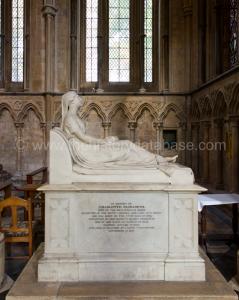
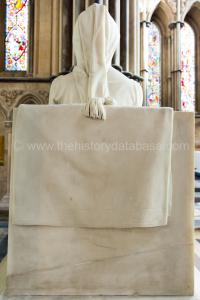
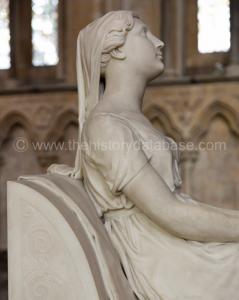
Memorials of Francis Chantrey RA in Hallamshire and Elsewhere Part V London Life and Works. To 1825 belongs the figure of Mrs. Digby, in marble, seated on a couch, in Worcester Cathedral [Map]; and a similar one of Mrs. Boulton (age 29), in the church of Great Tew, Oxfordshire [Map].
In 1831 James Lloyd 1st Baronet (age 68) was appointed Bishop of Worcester.
On 07 Jul 1840 Bishop John Jenkinson (age 58) died. He was buried at Worcester Cathedral [Map].
In 1879 Bishop Alwyne Compton (age 54) was appointed Dean Worcester.
Pershore Abbey [Map]. Early Medieval. Monument possibly to William de Harley. Left Leg Over Right. Sword in Left Hand. Holding a horn in his right hand. Fine band around his head. Head on single cushion.
Detailed description from Mark Downing of the Church Monuments Society posted to Facebook; abridged:
This limestone effigy lies flat on its back on a stone coffin, and is positioned in the middle of the south transept. The legs are missing below the knees. The figure is represented cross-legged (left over right). Below the head is a single rectangular cushion.
It wears a mail hauberk, mitten gauntlets and a coif all made in one. There is a cord around the head, above the face-opening, passing through rings of mail at wide intervals. A triangular flap which can be seen on the left side of the neck, represents the part of the mail coif called a ventail. This was a flap of mail drawn across the mouth to close the face-opening, and was secured to the temple either by a strap and buckle, or by a knotted cord. The mail of the armour is rendered by parallel rows of C's, alternate rows having the curves lying in the opposite directions. The rows of mail run around the coif, arms and hauberk. The left arm is partially concealed underneath the shield with the palm of the hand resting on top of the pommel of the sword. The right hand is bare, with the mitten-gauntlet off the hand, hanging loose around the wrist. The hand is holding a hunting horn at hip level, which has a strap passing through the lower-ring of a figure eight terminal. This strap is then attached around the horn at its rear and centre. Attached to the upper ring of the terminal is a loose strap which may have been used to suspend the horn from either the sword-belt or a baldric, the loose end falling underneath the hand.
Clearly shown within the opening of the gown, beneath the arm is an additional underlying body-defence. This almost certainly represents a coat of plates, joined together at the side by three straps with rectangular buckles, the straps emerging from within the upper-breast: the rivets would have been painted on. An effigy in the Temple church, London, is wearing a similar plate defence. The coat of plates consisted of a poncho-like garment with either a solid breast-plate sewn into it, or a series of metal plates attached by rivets to a textile cover. Visible at the neck, in the aperture of the coif, is a smooth garment. Presumably this represents the upper-chest portion of the coat of plates described above.
Worn over the coat of plates is a long sleeveless gown reaching to the calf, with the front open in the usual V-fashion. On the left arm, suspended from a guige which passes diagonally across the chest and over the right shoulder, is a long kite-shaped shield, which is concave towards the body. The shield is plain with no traces of heraldry present. Biting the tip of the shield is a damaged creature, possibly a griffin, dragon or wyvern.
The sword belt which has a square buckle is decorated with I-shaped bars, having a circular boss in their centres. The belt is attached to the scabbard by a single band. The loose portion of the belt falls to the thigh. The pommel of the sword is virtually concealed by the left hand. The grip is of medium length and the remains of the right quillon is worn. The sword, in its scabbard, lies at an angle on the left side of the figure, its tip broken.
Covering the knees and the lower part of the legs are mail hose. The mail represented in the same manner as on the coif and arms. Shown below the left knee is a strap, intended to stop the mail sagging down the leg.
Unfortunately the effigy has been damaged and has lost the lower part of the legs. A drawing by Thomas Dingley in the seventeenth century shows the effigy complete with an animal resting below the feet. The drawing also shows that originally stiff-leaf foliage was represented running along the right-hand edge of the slab, similar to that of William Longespèe ob.1227 (Wiltshire) Salisbury Cathedral [Map].
In 1838 the effigy was found buried on the north side of the church, with the stone coffin placed beneath it. Thomas Habington recorded the effigy on the north side of the quire, also with a hare at his feet which is now missing.
As previously mentioned a serpent or dragon is biting the point of the shield. The theory as to why these creatures are represented on monuments is not fully understood, but may derive from Psalm 91, v. 13. 'Thou shalt tread upon the lion and adder: the young lion and the dragon, shalt thou trample under foot'. These type of creatures are found on effigies in the North-East of England, for example at Egglesclffe, (Durham), Fountains Abbey [Map] c.1325 and Bainton c.1320-40, (both Yorkshire). It must be remarked that the Pershore effigy is not related to the examples found in the North-East as can be observed on stylistic grounds. Lawrence Stone remarks on a Westminster-Lincoln stylistic connection which may carry some weight, but as the effigy is so singular it is very difficult to attribute it to any single group. However the upper-drapery is not too dissimilar to work at Worcester Cathedral [Map] (q.v.), and Alfred C. Fryer has attributed both Worcester (1) and Pershore to the 'Bristol Workshop'.
A very unusual feature is the presence of a horn which is held in the right hand. Other effigies known to the writer where horns are represented can be seen for instance at: Glinton (Northamptonshire) c.1300-1325, Newland (Gloucestershire) c.1457, Skegby, (Nottinghamshire) c.1300 and Wadworth (Yorkshire), c.1300, all are dressed in civilian clothes whereas the Pershore effigy is represented in armour. The reason why the Pershore effigy is represented with a horn is open to at least two theories. The traditional belief is that he was a forest ranger or warden of the Kings forest. The second is that he held land by the horn, 'horngeld'. A splendid medieval oliphant horn known as 'The Savernake Horn' is preserved in the British Museum, London, which has silver enamelled mounts decorated with hunting dogs, forest animals, a seated King, a bishop and a forester. It is thought to have once belonged to the Sturmy family who were hereditary wardens of the Savernake forest from the early twelfth century until the first quarter of the fifteenth century and would add most weight to the theory of the Pershore effigy being a forest warden.
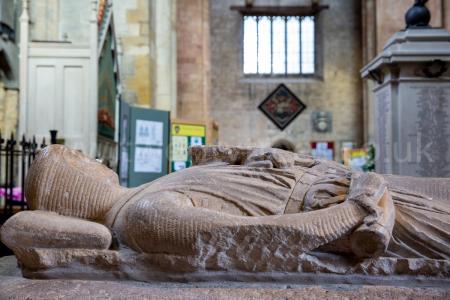
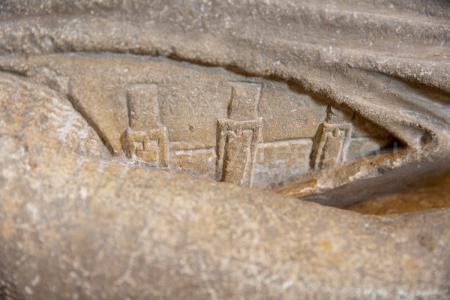
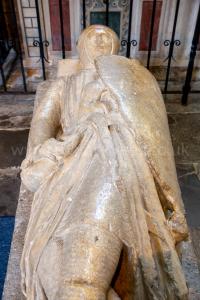
Hudibras On Samuel Butler Author of Hudibras. Our author received his first rudiments of learning at home; he was afterwards sent to the college school at Worcester, then taught by Mr. Henry Bright,* prebendary of that cathedral, a celebrated scholar and many years the famous master of the King's school there; one who made his business his delight; and though in very easy circumstances continued to teach for the sake of doing good, by benefiting the families of the neighbouring gentlemen, who thought themselves happy in having their sons instructed by him.
Note 2. Mr. Bright is buried in the cathedral church of Worcester [Map] near the north pillar at the foot of the steps which lead to the choir. He was born 1562, appointed schoolmaster 1586 made prebendary 1619, died 1626. The inscription in capitals, on a mural stone, now placed in what is called the Bishop's Chapel, is as follows:
Mane hospes et lege,
Magister HENRICUS BRIGHT,
Celeberrimus gymnasiarcha.
Qui Bcholse regi» istic fimdatae per totos 40 annos
summa cum laude praefuit.
Continues.